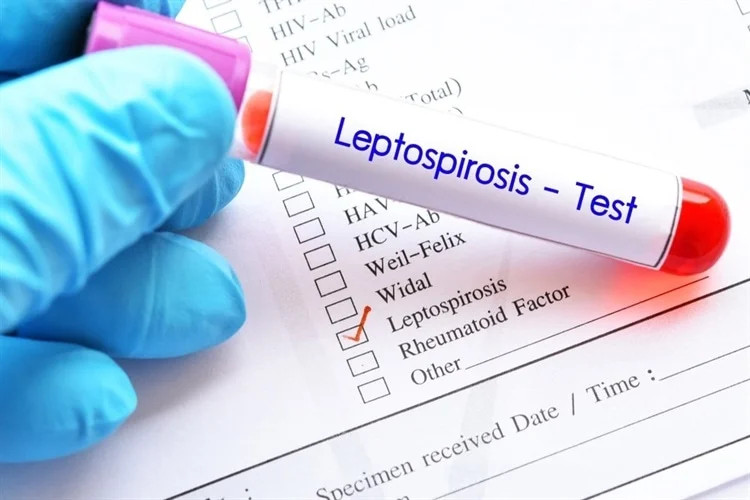Malakalinga, J. J., Misinzo, G., Msalya, G. M., Shayo, M. J., & Kazwala, R. R. (2023). Genetic diversity and Genomic analysis of G3P [6] and equine-like G3P [8] in Children Under-five from Southern Highlands and Eastern Tanzania. Acta Tropica, 106902.
Summary
Rotavirus group A genomic characterization is critical for understanding the mechanisms of rotavirus diversity, such as reassortment events and possible interspecies transmission. However, little is known about the genetic diversity and genomic relationship of the rotavirus group A strains circulating in Tanzania. The genetic and genomic relationship of RVA genotypes was investigated in children under the age of five. A total of 169 Fecal samples were collected from under-five with diarrhea in Mbeya, Iringa and Morogoro regions of Tanzania. The RVA were screened in children under five with diarrhea using reverse transcription PCR for VP7 and VP4, and the G and P genotypes were determined using Sanger dideoxynucleotide cycle sequencing. Whole-genome sequencing was performed on selected genotypes. The overall RVA rate was 4.7% (8/169). The G genotypes were G3 (7/8) and G6 (1/8) among the 8 RVA positives, while the P genotypes were P[6] (4/8) and P[8] (2), and the other two were untypeable. G3P[6] and G3P[8] were the identified genotype combinations. The genomic analysis reveals that the circulating G3P[8] and G3P[6] isolates from children under the age of five with diarrhea had a DS-1-like genome configuration (I2-R2-C2-M2-axe-N2-T2-E2-H2). The phylogenic analysis revealed that all 11 segments of G3P[6] were closely related to human G3P[6] identified in neighboring countries such as Uganda, Kenya, and other African countries, implying that G3P[6] strains descended from a common ancestor. Whereas, G3P[8] were closely related to previously identified equine-like G3P[P8] from Kenya, Japan, Thailand, Brazil, and Taiwan, implying that this strain was introduced rather than reassortment events. We discovered amino acid differences at antigenic epitopes and N-linked glycosylation sites between the wild type G3 and P[8] compared to vaccine strains, implying that further research into the impact of these differences on vaccine effectiveness is warranted. The phylogenic analysis of VP7 also identified a bovine-like G6. For the first time in Tanzania, we report the emergence of novel equine-like G3 and bovine-like G6 RVA strains, highlighting the importance of rotavirus genotype monitoring and genomic analysis of representative genotypes.
Introduction
Rotavirus is one of the causes of diarrhea in children under the age of five worldwide (Komoto et al., 2016; Liu et al., 2012). Rotaviruses are currently responsible for 215,000 deaths in children under the age of five worldwide and half of the deaths are from sub Saharan countries (Tate et al., 2016). In Tanzania, Rotavirus is thought to be responsible for one-third of diarrhea hospitalizations and over 36% (2552) of diarrhea-related deaths in children under the age of five (WHO, 2018). Despite this, the RVA was responsible for 8171 (70%) of the 11,391 deaths caused by diarrhea in children under the age of five in 2008. Other pathogens responsible for diarrhea in Tanzanian children under the age of five include Diarrheagenic Escherichia coli, Salmonella spp, Shigella spp, Campylobacter, Norovirus, Astrovirus, Cryptosporidium parvum, Entamoeba histolistica, and Giardia (Vargas et al., 2004; Moyo et al., 2007, 2011; Ngosso et al., 2015). However, Rotavirus is responsible for a higher percentage (36%) of diarrhea deaths in children under the age of five (PATH, 2012; WHO, 2018).The RVA infection appears to be decreasing following vaccine implementation and improved sanitation and hygiene. After vaccine introduction, the prevalence ranged from 9% to 37% (Abeid et al., 2016; Gachanja et al., 2015; Hokororo et al., 2014; Jani et al., 2018; Mchaile et al., 2017; Malakalinga et al., 2019; Nalitolela et al., 2021), whereas before vaccine introduction, the prevalence ranged from 9.8% to 51% (Moyo et al., 2007; Mhalu et al., 1988; Temu et al., 2002, 2012; Sam et al., 1988). Therefore, RVA is still causing deaths and is prevalent in the post-vaccine era. However, vaccine introduction may result in vaccine pressure, causing rotavirus strain patterns to change (Shah et al., 2017). As a result, more evidence elucidating rotavirus burden and genotypes after vaccine introduction is critical for strategically implementing advanced control programs.
Rotaviruses are members of the Reoviridae family, and their genome is made up of 11 double-stranded segmented RNAs (Estes and Kapikian, 2007). Segments 1–4, 6 and 9 encode viral structural proteins (VP) VP1–4, VP6 and VP7, respectively, while segments 5, 7, 8, 10, and 11 encode viral non-structural proteins (NSP) NSP1, 3, 2, 4, and 5/6, respectively. The VP7 and VP4 proteins form the virions outer surface and are responsible for binary classification (G1, 2 –Gnth for VP7 and P[1], P[2]-P[nth] for VP4). They also play a role in inducing strain specific immunity and are thus important in the development of rotavirus vaccines (Park et al., 2011). However, VP7 and VP4 are susceptible to mutation, which could result in a new lineage or strain capable of escaping neutralization antibodies induced naturally or by the vaccine (Arista et al., 2006; Zeller et al., 2012). So far, 41 G and 57 P genotypes have been reported based on VP7 and VP4 classification, respectively in humans and other vertebrates (RCWG, 2018). Therefore continuous monitoring rotavirus genotypes is important for identification of the newly generated genotypes for their inclusion in the vaccine cocktail.
Rotavirus G genotypes including G1–4, 9, 12, as well as P genotypes P[4] and P[8], these genotypes are found in combination such as G1P[8], G2P[4], G3P[8], G4P[8], G9P[8], and G12P[8] are the most common RVA associated with human infections worldwide (Guerra et al., 2019; Santos and Hoshino, 2005; Seheri et al., 2014). In Africa, rotavirus is highly diverse in African children under the age of five, with genotypes such as G1P[8], G2P[4], G9P[8], G2P[6], G12P[8] G3P[6], G1P[4], G2P[8], G9P[4], G12P[4]) G8P[6], G8P[8], G12P[6] and G12P[6] (Mwenda et al., 2010; Seheri et al., 2014, 2018). In Tanzania, circulating rotavirus genotypes in Mbeya, Dar es salaam, Mwanza, include G1P[8], G2P[4], G1P[6], G1P[4], G3P[8], G3P[6], G8P[4], G8P[6], G8P[8], G4P[4], G4P[6], G9P[8], and G12P[6] (Abeid et al., 2017; Hokororo et al., 2014; Jani et al., 2018; Moyo et al., 2014; Seheri et al., 2018). Furthermore, non-human origin rotavirus genotypes such as G8P[4], G8P[6], G8P[8], and G3P[6] have been reported in Tanzanian children under the age of five (Abeid et al., 2017; Hokororo et al., 2014; Jani et al., 2018; Moyo et al., 2014; Seheri et al., 2018). However, heterotypic genotypes to the introduced vaccine, such as G3P[6] have been reported as a second prevalent genotype after vaccine introduction (Jani et al. 2017; Abeid et al., 2016). Therefore, the insight to its evolution and genomic analysis of theses genotypes critical in understanding possible genotypes sharing between humans and animals and therefore support the future strategic control plan across species
Currently, the informations about genomic profile of G3P[6] and other circulating genotype in children under five in Tanzania are limited and few studies have reported rotavirus genotypes after vaccine introduction in Tanzania (Jani et al. 2017; Abeid et al., 2016; Mchaile et al., 2017). We therefore conducted this study to comprehend the RVA genotype after the vaccine introduction and performed genomic analysis of selected rotavirus strains in Southern highland and Eastern Tanzania.
For more information, CLICK HERE
Share this page




